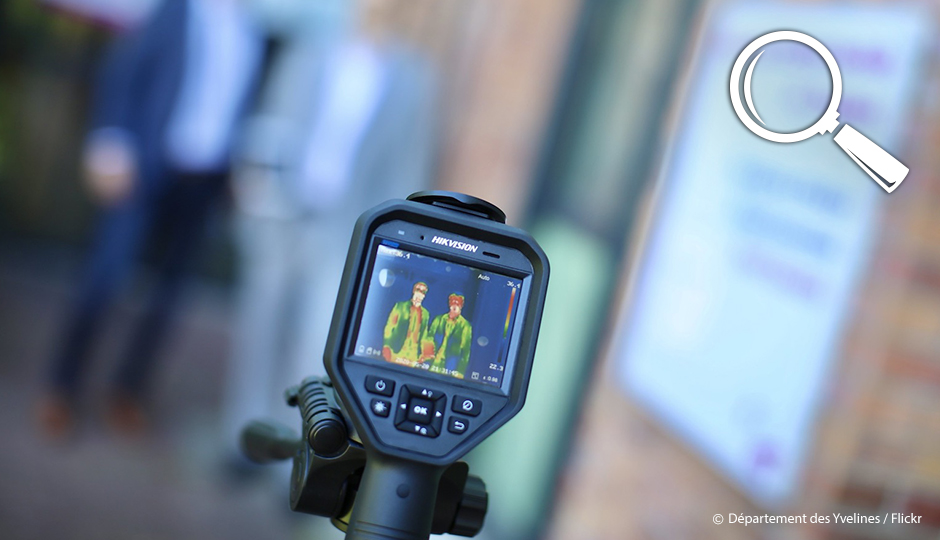Auteur : Agence Science Presse - Maxime Bilodeau
Because of the pandemic, thermal cameras or infrared cameras are popping up at public places and points of entry like airports. But it’s doubtful that these devices are reliable at detecting individuals who have a fever, and who potentially could carry the coronavirus. The Rumour Detector explains why.
A thermal camera records “heat waves” (or infrared radiation) emitted by everything around us, including human beings. When placed in a passageway, like a building lobby, they can detect what visitors have an above-normal body temperature. But there are three problems.
1- Body temperature fluctuates
It’s often said that the human body operates like your thermostat at home. As soon as the body’s internal temperature rises or falls, all kinds of physiological mechanisms spring into action. Their aim: restore the balance at about 37°C. A fever is defined as a temperature at rest of 38°C or more. It appears when the body is defending itself against a viral attack. That’s what a thermal camera can detect.
But in practice, many factors cause the internal temperature to vary. They include age, sex, time of day, taking medication and feverishness. These factors can all trigger false positives (the camera detects a fever that isn’t a fever). They can also trigger false negatives (the camera doesn’t detect an anomaly that exists). Even the level of physical activity and moisture on the skin can be important. Also, a thermal camera doesn’t measure the internal temperature, but the temperature on the surface of the skin. This is a little lower.
Some researchers affirm that only the temperature at the inner corner of the eye seems to correlate with the internal temperature. This is a tiny target, not easy to measure with such a device.
2- The quality of measurements is variable
The temperature of a room, its ventilation, its humidity rate and contamination by other heat sources all cause interference with thermal cameras. The Food and Drug Administration (FDA) points this out in an explanatory pamphlet. Published in the context of the pandemic, it is a reminder of the advantages and limits of this technology. For example, according to the FDA, the results are imprecise when the camera observes a group of people in a crowded area. Some cameras perform better than others. The measurements must be taken in a specific order and in a specific way, according to a European Union Health document published in 2019.
Two years earlier, the International Standards Organization (ISO) had proposed guidelines accounting for these realities. For example, the ISO recommends measuring the temperature of one person at a time, according to a triage logic. A suspected case is isolated and then investigated with more reliable technology, such as an oral thermometer.
This hasn’t prevented the demand for thermal cameras from rising since the beginning of the pandemic. That’s even though they are marketed as mass detection devices.
3- Asymptomatic people fall through the cracks
The exact percentage of asymptomatic COVID-19 carriers is unknown. They were estimated at 16% in a notice published last May by the Institut national de santé publique du Québec. But because they don’t have fever, they certainly won’t be “intercepted” by a thermal camera.
Add the people who don’t have symptoms yet, because of the coronavirus incubation period. On January 30, researchers at the London School of Hygiene and Tropical Medicine published a study (not peer reviewed). They estimated the outcome for 100 travellers infected with COVID-19 at the end of a 12-hour flight. 42 of them would pass the thermal camera test, both when entering and exiting the plane.
That’s why the World Health Organization (WHO) doesn’t recommend using thermal cameras to screen travellers “at entry”. “Temperature screening alone, at exit or entry, is not an effective way to stop international spread,” the WHO wrote in a January press release, updated at the end of February. “In addition, such measures require substantial investments for what may bear little benefits.”






